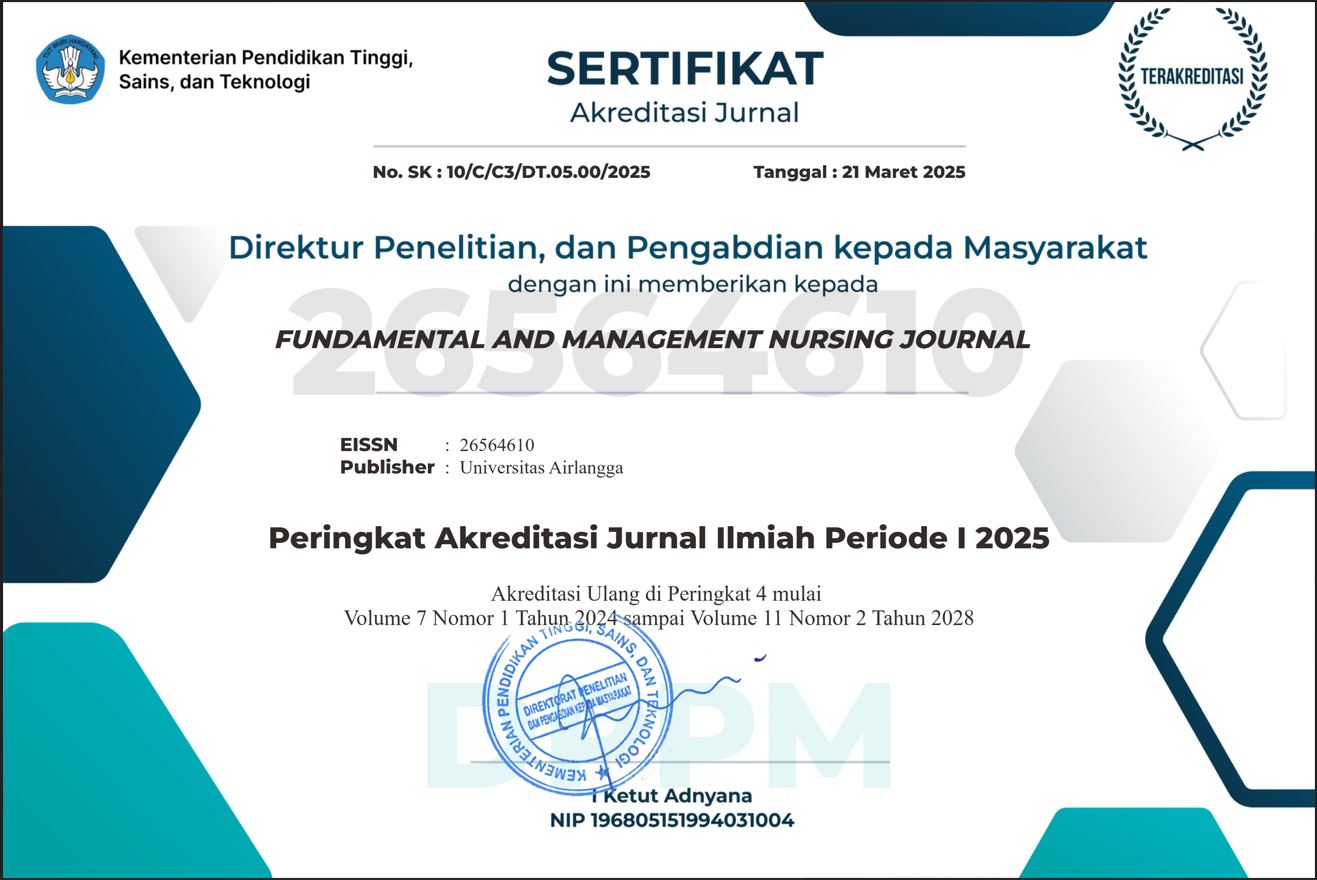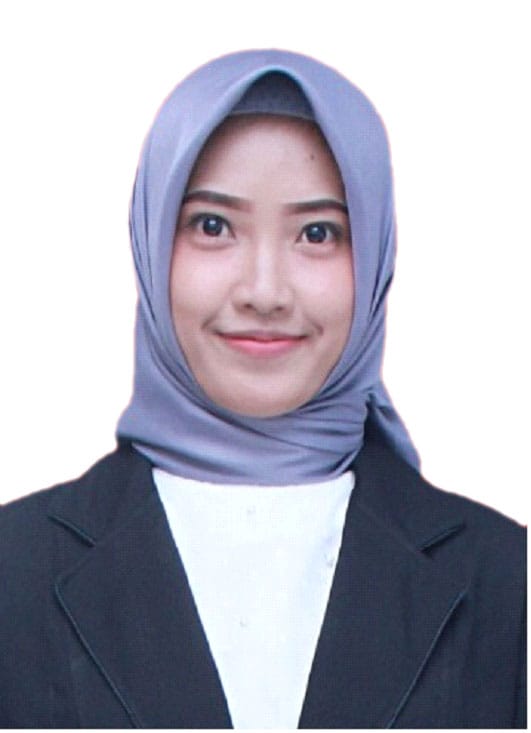The Influence of Classic Music Therapy on Learning Concentration in School-Age Children
Introduction: School-aged children are in the developmental stage of concrete operational thinking, where they begin to think logically and solve problems in a structured way. However, many children at this stage still experience difficulties in subjects which often requires high levels of concentration and problem-solving skills. This study aims to determine the effect of classical music therapy on learning concentration in school-aged children.
Method: This study employed a quasi-experimental design with a non-equivalent control group design. Population consisted of 42 school-aged children, a sample of 38 was obtained using a non-probability sampling. Classical music therapy was used as the independent variable, while learning concentration served as the dependent variable. Learning concentration was measured before and after the intervention. Data were analyzed using the Wilcoxon signed-rank test to determine the effect intervention.
Results: The results of the Wilcoxon statistical test yielded a ρ value of 0.00, which is smaller than the predetermined significance level (α = 0.05). This finding indicates that classical music therapy has a statistically significant effect on improving learning concentration in school-aged children. The outcome supports the notion that classical music stimulates cognitive, focus, and learning atmosphere.
Conclusion: This study concludes that classical music therapy has a significant positive influence on learning concentration. The intervention was shown to enhance students’ ability to maintain focus and sustain attention during learning activities, suggesting that classical music supports environment for academic engagement. Results reinforce the importance of innovative educational interventions that address cognitive, emotional, and environmental factors in the learning process.
1. INTRODUCTION
According to Piaget's cognitive development theory, school-age children have entered the concrete thinking stage. School-age children can think logically and reasonably about something. Elementary school (SD) children are from 6 to 12 years old. Development in children is an increase in the ability of more complex body structures and functions as a result of the maturation process at each age.(Zuhroh, 2024). The main task of elementary school children is to study(Andita & Desyandri, 2019). There are several subjects at the elementary school level, including the Merdeka Mengajar Curriculum, which contains Mathematics, Indonesian, Natural and Social Sciences (IPAS), Javanese, Pancasila and Citizenship Education (PPKN), art, Environmental Education (PLH), Islamic Religious Education (PAI), Physical Education, Sports and Health (PJOK), and English. For most school-age children, there is a subject that is considered the most difficult, namely mathematics. Mathematics is the oldest science among other subjects. The benefits of learning mathematics, children can think more systematically, something that is very important every day by counting, then another benefit of mathematics is that it can make logical thinking more developed because at this time children's concentration during learning is very lacking(Nurfadhillah et al., 2021). Based on the research results by Harwell. Joan M (1982) some students, said that mathematics is difficult, makes you dizzy and needs a long way to solve it. Parents add to the child's stressors with pressure that requires children to be able to so that it increases the child's dislike of mathematics lessons. One in seven 14.3% of elementary school students have problems in mathematics lessons. So, it is necessary to provide an interesting, innovative, and fun way of learning mathematics for students. One of the comfortable feelings can be done with music(Wulansari et al., 2019).
According to(Herdianti et al., 2024)) learning concentration indicators, namely cognitive, affective and psychomotor aspects. According to(Herdianti et al., 2024)) Improving children's concentration in learning can be done by providing music therapy and relaxation techniques. Music is a necessity for humans as a whole and music is part of art that can provide joy and fun. Music is one of the hobbies of children and adults, music can provide its own spirit for every human being who listens to it.(Suci, 2023). One of the types of music that is often used in conditioning learning situations is classical music. Classical music has a slow rhythm and provides a calm feeling and a peaceful feeling.(Wulansari et al., 2019). Music has long been considered by humans to have an influence on the human body and soul. When carrying out a learning process, music can create a sense of comfort in learning and can help improve children's concentration in cognitive learning.(Muin, 2022). There are several popular types of music (for example, Mozart's piano concerto) that are very effective for use when reading and can improve concentration. Meanwhile, classical music, if specially designed, can improve concentration and the desire to learn.(Indriani et al., 2023). The Indonesian Ministry of Health in its report on Indonesia's health profile in 2018 stated that early childhood (numbering 23.7 million people) is 10.4% of the Indonesian population. Data related to child development shows that 65.8% of children's cognitive development has not yet developed, while 19.5% of children's cognitive development is developing well and 0.4 million (16%)(Rukmini, 2021). Research from the Indonesian Pediatrician Association (IDAI) East Java in 2019 which conducted developmental examinations on 2,634 children. The results showed that 53% of children's development was normal according to their age, 13% were doubtful and needed further examination, and 34% had deviations. The developments found were 10% gross motor aspects (such as sitting and walking), 30% fine motor aspects (holding and writing), 44% speech and 16% socialization of independence. Children experience cognitive and language development disorders around 8%(Lestari & Sary, 2023). The aim is to analyze the influence of classical music therapy on learning concentration in school-aged children at the State Elementary School UPT 66 Gresik, 1. Identify the concentration of children's learning in the intervention group, identify children's learning concentration in the control group, Analyze the influence of classical music therapy on learning concentration in school-age children at UPT SD Negeri 66 Gresik. Therefore, this study aims to determine the effect of classical music therapy on learning concentration in school-aged children.
2. METHODS
2.1 Research Design
This study employed a quasi-experimental design with a nonequivalent control group design approach. This design was selected because random assignment of participants to groups was not feasible within the school setting, yet it still allowed for the comparison of outcomes between children who received the intervention and those who did not. The design included two groups: an intervention group, which was provided with classical music therapy during study sessions, and a control group, which continued learning activities without exposure to classical music. Both groups were assessed before and after the intervention to measure changes in learning concentration. The use of this design made it possible to evaluate the effect of classical music therapy while considering potential confounding factors, thereby strengthening the internal validity of the study despite the absence of randomization.
2.2 Population, Sample and Sampling
2.2.1 Population
The population is defined as the entire group of objects or subjects that meet the criteria for inclusion in a study(Amin et al., 2023).
Copyright (c) 2025 Aura Lailatul Febriani Krisvianti Putri, Widiharti Widiharti, Diah Fauzia Zuhroh, Diah Jerita Eka Sari

This work is licensed under a Creative Commons Attribution 4.0 International License.
1. The journal allows the author to hold the copyright of the article without restrictions.
2. The journal allows the author(s) to retain publishing rights without restrictions.
3. The legal formal aspect of journal publication accessibility refers to Creative Commons Attribution (CC BY).
















